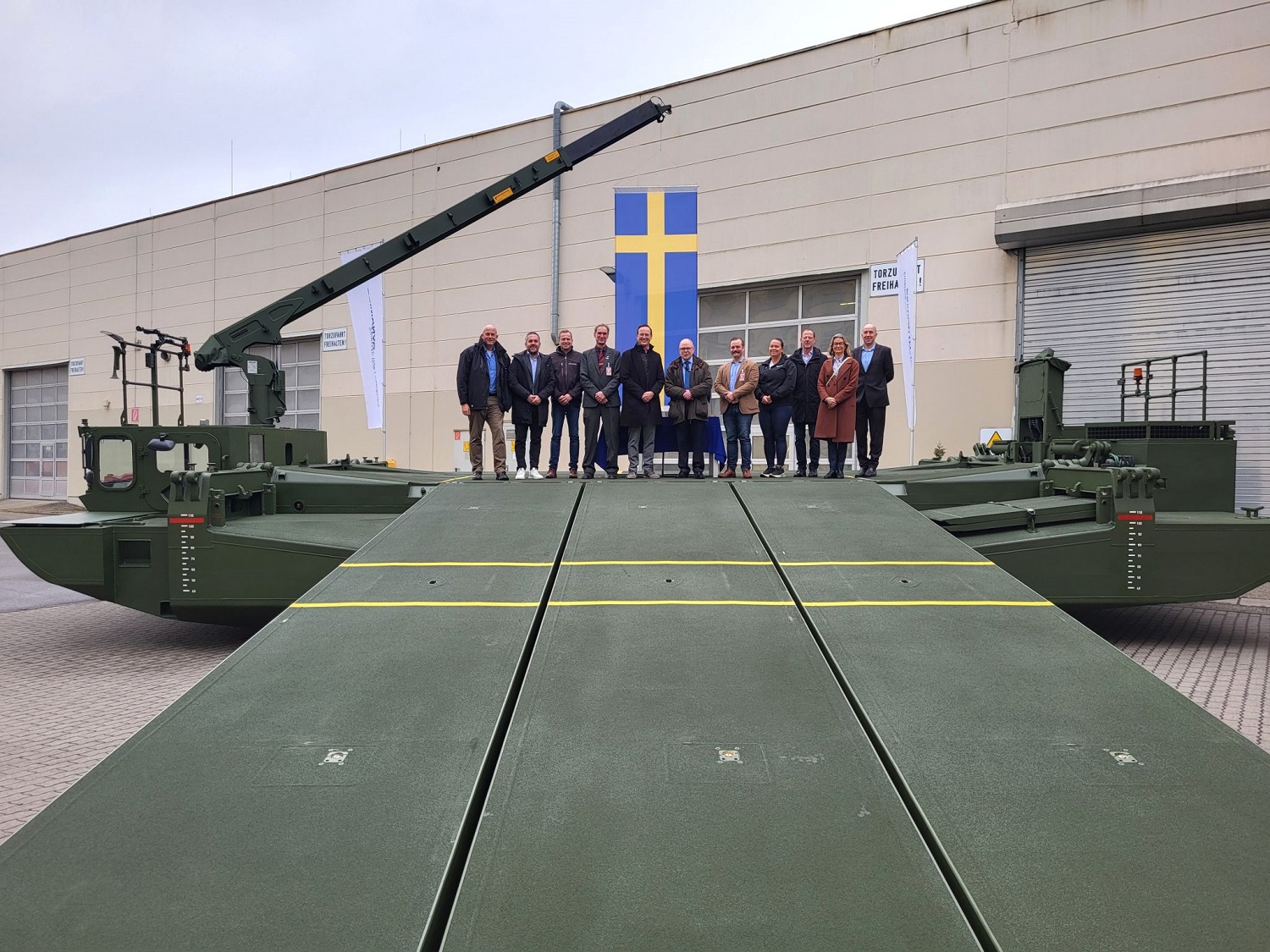On March 5, the Swedish procurement agency Försvarets Materielverk (FMV) ordered the delivery of additional M3 amphibious bridge and ferry systems from General Dynamics European Land Systems–Bridge Systems (GDELS-BS). By receiving this third batch of the M3 in its latest version, the new NATO member will further strengthen its and NATO’s gap crossing capabilities. The amphibious bridge and ferry system M3 is the fastest available means for wet gap crossing within NATO. It can be used as a floating bridge or ferry to carry even the heaviest main battle tanks to negotiate wide wet gaps. The all-terrain M3 is ready for use within minutes – a vital factor on today’s transparent battlefield. The system has proven itself in use under a wide range of climatic and topographical conditions.
The M3 Amphibious Bridge System is a self-propelled, amphibious bridging vehicle and ferrying vehicle that is used for the projection of tanks and other vehicles across water obstacles. Originally developed by the German firm Eisenwerke Kaiserslautern (EWK, since 2002 acquired by General Dynamics European Land Systems), it succeeded the conceptually similar M2 made by the same company. Like its predecessor, the M3 traverses roads on its four wheels, deploying two large aluminium pontoons for buoyancy on water. Development of the M3 began in 1982, with the final prototype being delivered 10 years later in 1992. A first order of 64 serial vehicles was made in 1994, and it entered service with the German and British armies in 1996. Since then, the M3 has also been adopted by several NATO and allied nations.

The M3 is self-deployable by road, operating as a 4×4 wheeled vehicle with a maximum road speed of 80 km/h. For amphibious operation, two large aluminium pontoons are deployed, unfolding them along the length of its hull. The crew exits the vehicle cab to maneuver the pontoon using controls located on top of the hull. In water, the M3 is propelled and steered by 2 fully traversable pump jets at speeds of up to 14 km/h. Multiple rigs may be joined by long connectors called “ramps”, 4 of which are carried on each vehicle, to form a bridge across a water obstacle. 8 M3 Rigs will bridge a 100m water gap this way, and can be traversed by vehicles up to and including the heaviest 60+ ton main battle tank like the Leopard 2A6 and Challenger 2. Alternatively, just 2 Rigs may be joined to create a ferry capable of carrying a similar load across much wider water gaps.
General Dynamics European Land Systems (GDELS) is an automotive and arms manufacturer spread across Europe, with a headquarter in Madrid, Spain. It is a business unit of General Dynamics which consolidated in one structure all European subsidiaries of General Dynamics Land Systems (GDLS). At the beginning of the years 2000, General Dynamics acquired major European defence companies, and consolidated the activities and expanded the collaborations. General Dynamics Corporation acquired Santa Bárbara Sistemas in July 2001. General Dynamics Corporation acquired the defence activity of EWK Eisenwerke Kaiserslautern in October 2002 and became GDELS – Germany in 2003. General Dynamics European Land Systems was founded in 2003. General Dynamics Corporation acquired the land defence vehicles unit of Steyr-Daimler-Puch Spezialfahrzeug GmbH in October 2003, and incorporated it to GDELS.













